Featured Image: ULA
Lift Off Time | June 22, 2023 – 09:18 UTC | 05:18 EDT |
|---|---|
Mission Name | NROL-68, a mission for the National Reconnaissance Office |
Launch Provider | United Launch Alliance (ULA) |
Customer | National Reconnaissance Office (NRO) |
Rocket | Delta IV Heavy |
Launch Location | SLC-37, Cape Canaveral SFS, Florida, USA |
Payload mass | Unknown |
Where is the satellite going? | Unknown |
Will they be attempting to recover the first stage? | No, this is not a capability of ULA |
Where will the first stage land? | It will crash into the Atlantic Ocean |
Will they be attempting to recover the fairings? | No, this is not a capability of ULA |
Are these fairings new? | Yes |
How’s the weather looking? | TBD |
This will be the: | – 1st ULA mission of 2023 – 156th ULA mission ever – 15th mission of a Delta IV Heavy – 94th orbital launch attempt of 2023 |
Where to watch | Official livestream |
What Does All This Mean?
United Launch Alliance (ULA) will be launching another satellite for the National Reconnaissance Office (NRO), the NROL-68, atop a Delta IV Heavy. Launching from Space Launch Complex 37 at the Cape Canaveral Space Force Station in Florida, this mission will mark the 15th mission of a Delta IV Heavy.
What is NROL-68?
Due to the NRO being a government agency, there is no publicly available information regarding the parameters and function of the NROL-68 satellite. It is also difficult to speculate on the purposes, size, mass, and function of the satellite. The NRO has chosen ULA because of their continuously successful and highly accurate launches for all customers.
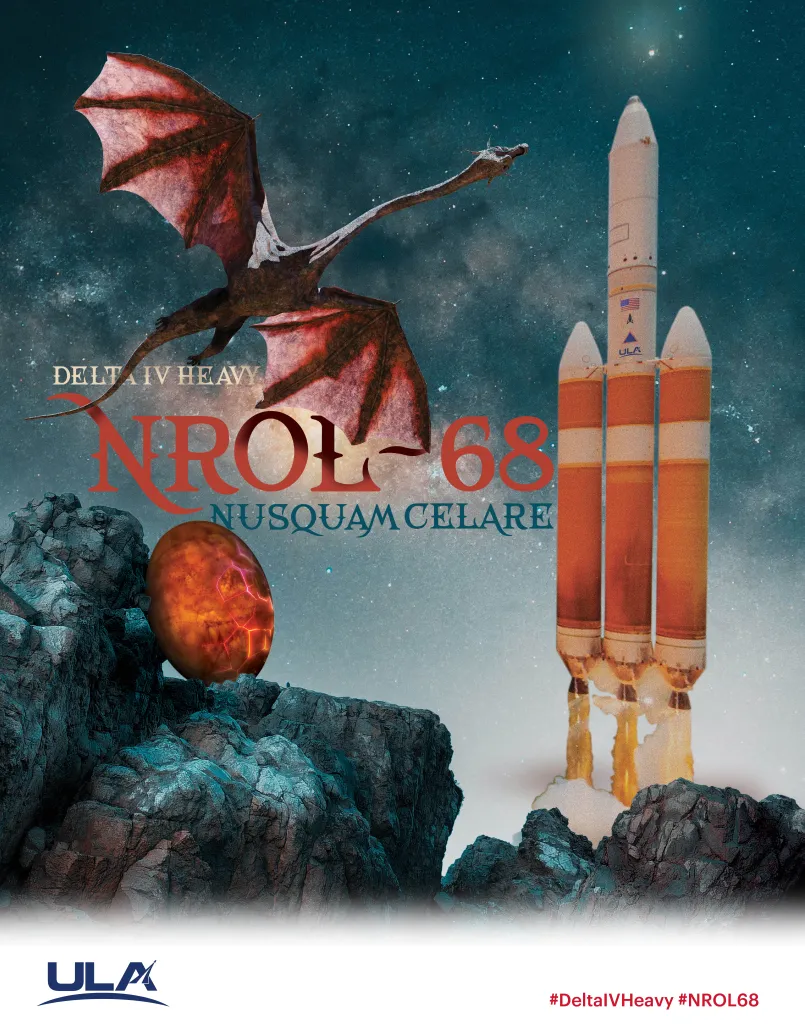
Timeline
Launch
| Hrs:Min:Sec From Lift-Off | Events |
| -0:00:05.0 | RS-68A Engine Ignition |
| 0:00:00.0 | Liftoff (Thrust to Weight > 1) |
| 0:00:09.4 | Begin Pitch/Yaw Maneuver |
| 0:01:18.5 | Mach 1 |
| 0:01:20.5 | Maximum Dynamic Pressure |
| 0:03:56.3 | Port and Starboard Booster Cutoff |
| 0:03:58.1 | Port and Starboard Booster Jettison |
| 0:05:36.0 | Booster Engine Cutoff (BECO) |
| 0:05:42.5 | First Stage Separation |
| 0:05:55.5 | Main Engine Start (MES-1) |
| 0:06:37.5 | Payload Fairing Jettison |
What is the Delta IV Heavy?
One of the more powerful rockets currently in operation, the Delta IV Heavy has launched payloads including NROL satellites and the Parker Solar Probe, a mission to study the Sun. All 14 of the previous Delta IV Heavy launches have been successful. Customers can choose between different payload fairing sizes according to their specific payload.
Payload Capabilites
Being a heavy-lift launch vehicle, the Delta IV Heavy is able to place up to 28,000 kg into a 90-degree low-Earth orbit and up to 14,000 kg into a 27-degree geostationary transfer orbit (GTO). ULA has two fairing sizes to accommodate different payload. Both fairings are five meters in diameter; one is 14 meters tall, while the other is 19.1 meters tall. The five-meter fairing is made of carbon composite and has two parts, called a “bisector” fairing. Additionally, there is an aluminum fairing assembled from three pieces, called a trisector fairing.
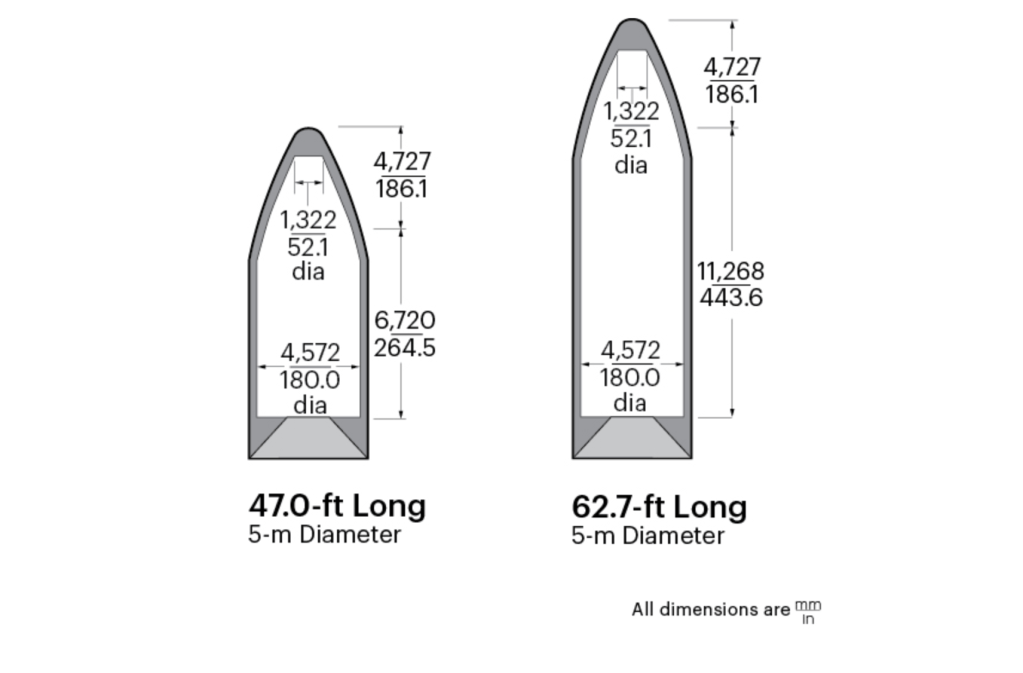
The First Stage
The Delta IV Heavy’s first stage comprises three nearly identical boosters strapped together. Each booster has one RS-68A engine, also manufactured by Aerojet Rocketdyne. The first stage is infamously known for the lighting itself on fire just before launch to burn off extra hydrogen. It does this because it needs to get rid of any hydrogen so it does not explode unintentionally during liftoff. The hydrogen comes from the purging of the engines prior to ignition. Each RS-68A engine can produce 3,100 kN (705,000 lbf) of thrust for a combined 9,300 kN of total thrust. The RS-68A engine has a specific impulse of 362 seconds and uses a combination of liquid hydrogen (LH2) and liquid oxygen (LOx).
During the flight, the center booster burns at a slightly slower throttle setting than the two side boosters. This is because the Delta IV Heavy needs all three boosters to get enough velocity to pass through the thick parts of the atmosphere. However, after that, they are expended and jettisoned to not carry any extra weight. As the vacuum-optimized second stage is very efficient but not very powerful, the Delta IV Heavy burns its center booster longer than other rockets, so the second stage can put its payload into orbit.

The Second Stage
Continuing up the rocket comes the second stage. The Delta Cryogenic Second Stage (DCSS) is powered by a single, vacuum-optimized RL10B-2 engine. For its fuel, the DCSS uses liquid hydrogen (LH2) and liquid oxygen (LOX) for the oxidizer. With the LH2 being on top, it is structurally separated from the LOX tank. It has the job of supporting the payload and payload fairing. The LOX tank is suspended below it and is responsible for structurally supporting the engine.
The RL10B-2 was originally built by Aerojet Rocketdyne and first flew in 1998. It can produce 110 kN (24,700 lbf) of thrust in a vacuum and has a specific impulse of 462 seconds. To save costs and weight, the gimbal system uses electromagnetic actuators over normal hydraulics, increasing reliability.



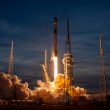
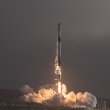
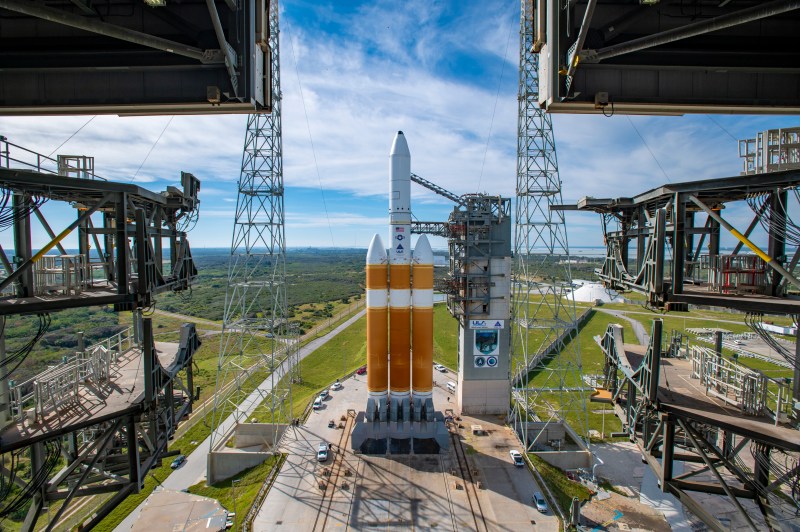
One more and Delta IV Heavy is retired.
Shocking that this will be ULA’s first launch of 2023. But they are being paid $440 M for it.